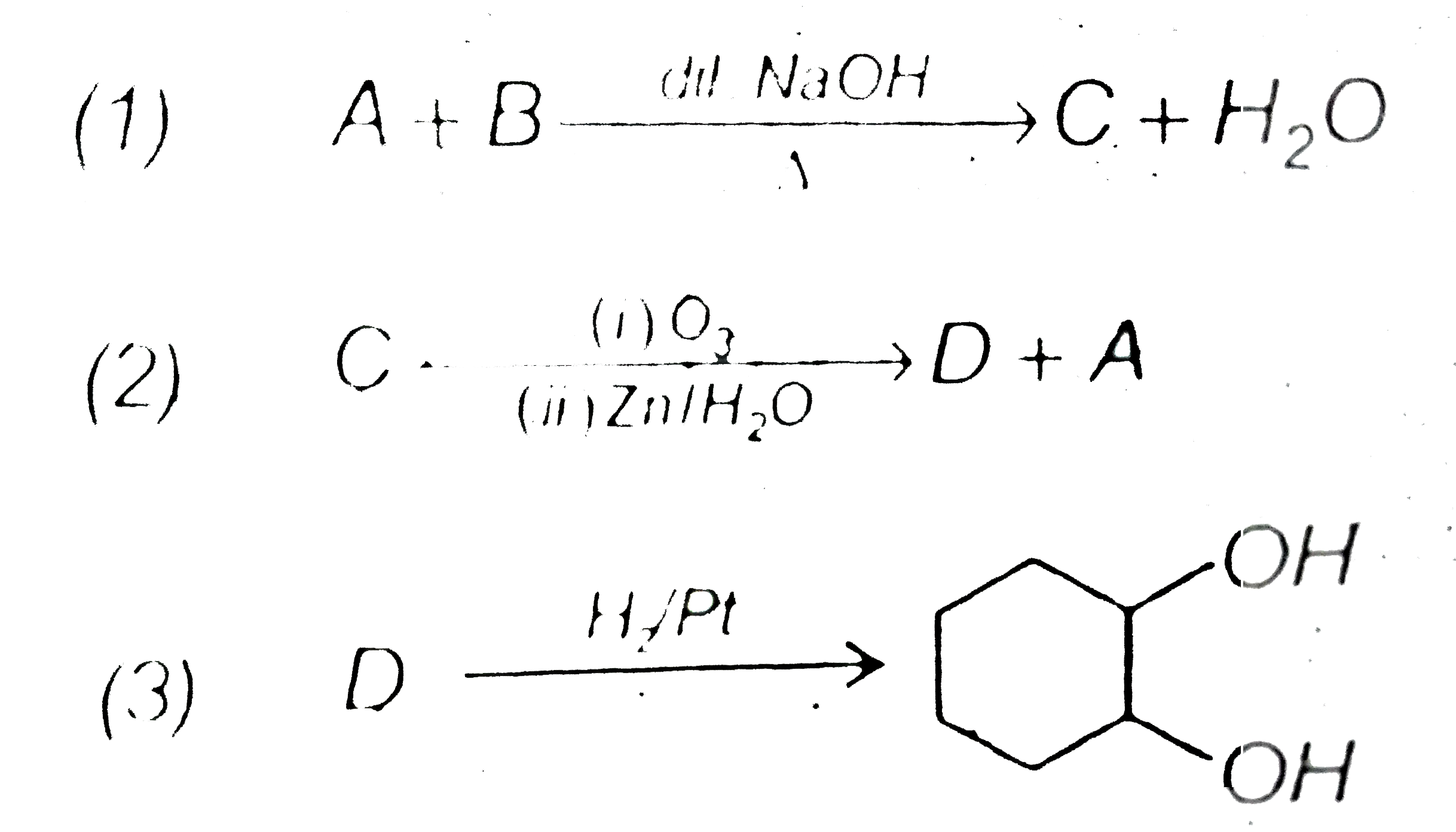Identify X in reaction :X+2H2OsteamΔ−−→XO2+2H2
C
Si
Ge
Sn
The correct Answer is:D
To identify the element X in the reaction X+2H2OΔ→XO2+2H2, we can follow these steps:
Step 1: Analyze the Reaction
The reaction shows that element X reacts with steam (water vapor) to produce a dioxide (XO2) and hydrogen gas (H2). This indicates that X must be a metal that can react with water at high temperatures.
Hint: Look for elements that can form dioxides and release hydrogen when reacting with steam.
Step 2: Identify Possible Candidates
The elements in Group 14 (the carbon family) are:
- Carbon (C)
- Silicon (Si)
- Germanium (Ge)
- Tin (Sn)
- Lead (Pb)
We need to determine which of these elements can react with steam.
Hint: Consider the reactivity of each element with water, especially in the presence of steam.
Step 3: Evaluate Each Element
- Carbon (C): Does not react with water.
- Silicon (Si): Does not react with water.
- Germanium (Ge): Does not react with water.
- Tin (Sn): Can react with steam at high temperatures to form tin dioxide (SnO2) and hydrogen gas.
- Lead (Pb): Unaffected by water due to the formation of a protective oxide layer.
Hint: Focus on the element that is known to react with steam to form a dioxide and hydrogen.
Step 4: Conclude the Identity of X
From the evaluation, the only element that reacts with steam to produce a dioxide and hydrogen is Tin (Sn). Therefore, X is identified as Tin.
Final Answer: X=Tin (Sn)
Summary of Steps:
1. Analyze the reaction to determine the nature of X.
2. List the Group 14 elements.
3. Evaluate the reactivity of each element with steam.
4. Conclude that Tin (Sn) is the only element that fits the criteria.
The reaction shows that element X reacts with steam (water vapor) to produce a dioxide (XO2) and hydrogen gas (H2). This indicates that X must be a metal that can react with water at high temperatures.
The elements in Group 14 (the carbon family) are:
- Carbon (C)
- Silicon (Si)
- Germanium (Ge)
- Tin (Sn)
- Lead (Pb)
- Carbon (C): Does not react with water.
- Silicon (Si): Does not react with water.
- Germanium (Ge): Does not react with water.
- Tin (Sn): Can react with steam at high temperatures to form tin dioxide (SnO2) and hydrogen gas.
- Lead (Pb): Unaffected by water due to the formation of a protective oxide layer.
From the evaluation, the only element that reacts with steam to produce a dioxide and hydrogen is Tin (Sn). Therefore, X is identified as Tin.
1. Analyze the reaction to determine the nature of X.
2. List the Group 14 elements.
3. Evaluate the reactivity of each element with steam.
4. Conclude that Tin (Sn) is the only element that fits the criteria.
Topper's Solved these Questions
- THE P-BLOCK ELEMENTSBOOK - NCERT FINGERTPS ENGLISHCHAPTER - THE P-BLOCK ELEMENTSEXERCISE - HIGHER ORDER THINKING SKILLS
9 Videos
- THE P-BLOCK ELEMENTSBOOK - NCERT FINGERTPS ENGLISHCHAPTER - THE P-BLOCK ELEMENTSEXERCISE - EXEMPLAR PROBLEMS
15 Videos
- STRUCTURE OF ATOM BOOK - NCERT FINGERTPS ENGLISHCHAPTER - STRUCTURE OF ATOM EXERCISE - Assertion And Reason
15 Videos
- THE S-BLOCK ELEMENTSBOOK - NCERT FINGERTPS ENGLISHCHAPTER - THE S-BLOCK ELEMENTSEXERCISE - Assertion And Reason
15 Videos
Similar Questions
?1.Δ/DIBAL−H−−−−−−−−−−−−−→2.H2OCH3−CH=CH−CH2−CH2−CH3
View SolutionIdentify A-D in the following reactions .

(1) A+BdilNaOH−−−−−→ΔC+H2O
(2) CdilNaOH−−−−−−−→(ii)Zn/H2OD+A
(3)
View SolutionConsider the following reactions :
2XS+3O2Δ−−→2XO+2SO2
2XO+XSΔ−−→3'X'+SO2
Then 'X' can not be :
View SolutionConsider the following reactions :
2XS+3O2Δ−−→2XO+2SO2
2XO+XSΔ−−→3'X'+SO2
Then 'X' can not be :
View SolutionIdentify A and B in the reaction given below
Ethane nitrile Hydrolysi−−−−−−−−−−−−−−−−→aq. H2SO4+2H2O−NH3ADecarboxylation−−−−−−−−−−−→Soda lime Δ−CO2B
View SolutionIn the reaction, H2SO4+P2O5Δ−−→(X)+SO3, the product (X) is :
View SolutionIn the given reaction
RCN(i)RMgX−−−−−−−−→(ii)H2O/H+(X), (X) will be
View SolutionIdentify X in the reaction HCHO+CH3Mgldry ether−−−−→IntermediateH2O/H+−−−−−→X :
View Solution_2019_CBT2_E01_030_Q01.png)
(1)Cl2/hv−−−−−−→(2).HOΔ product is
View SolutionIdentify Y in the reaction,
C6H5NH2NaNO2/HCl−−−−−−−→273KXH2O−−−−−−−→dil. H2SO4Y
View Solution
